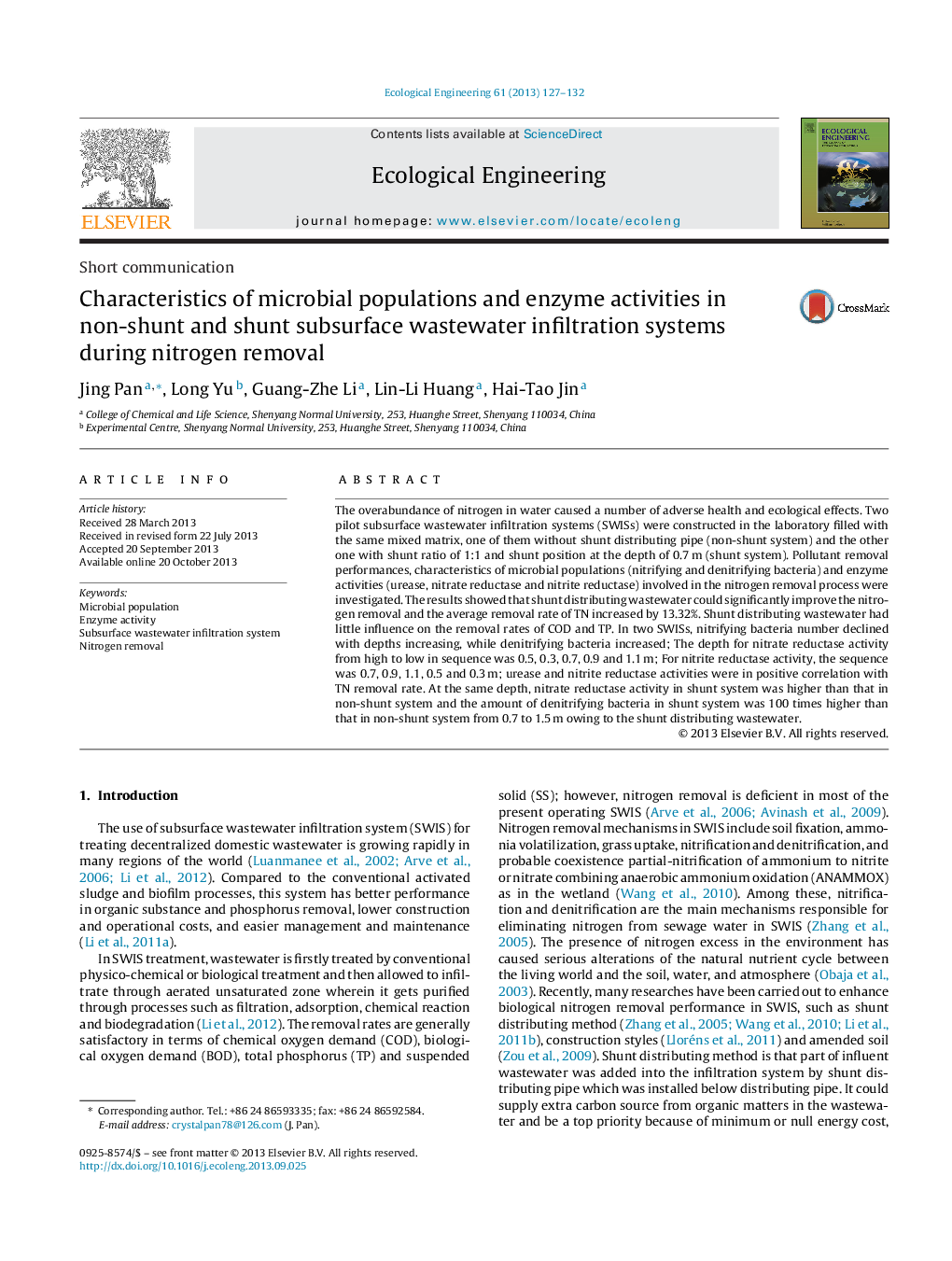| Article ID | Journal | Published Year | Pages | File Type |
|---|---|---|---|---|
| 4389471 | Ecological Engineering | 2013 | 6 Pages |
Abstract
The overabundance of nitrogen in water caused a number of adverse health and ecological effects. Two pilot subsurface wastewater infiltration systems (SWISs) were constructed in the laboratory filled with the same mixed matrix, one of them without shunt distributing pipe (non-shunt system) and the other one with shunt ratio of 1:1 and shunt position at the depth of 0.7Â m (shunt system). Pollutant removal performances, characteristics of microbial populations (nitrifying and denitrifying bacteria) and enzyme activities (urease, nitrate reductase and nitrite reductase) involved in the nitrogen removal process were investigated. The results showed that shunt distributing wastewater could significantly improve the nitrogen removal and the average removal rate of TN increased by 13.32%. Shunt distributing wastewater had little influence on the removal rates of COD and TP. In two SWISs, nitrifying bacteria number declined with depths increasing, while denitrifying bacteria increased; The depth for nitrate reductase activity from high to low in sequence was 0.5, 0.3, 0.7, 0.9 and 1.1Â m; For nitrite reductase activity, the sequence was 0.7, 0.9, 1.1, 0.5 and 0.3Â m; urease and nitrite reductase activities were in positive correlation with TN removal rate. At the same depth, nitrate reductase activity in shunt system was higher than that in non-shunt system and the amount of denitrifying bacteria in shunt system was 100 times higher than that in non-shunt system from 0.7 to 1.5Â m owing to the shunt distributing wastewater.
Keywords
Related Topics
Life Sciences
Agricultural and Biological Sciences
Ecology, Evolution, Behavior and Systematics
Authors
Jing Pan, Long Yu, Guang-Zhe Li, Lin-Li Huang, Hai-Tao Jin,
